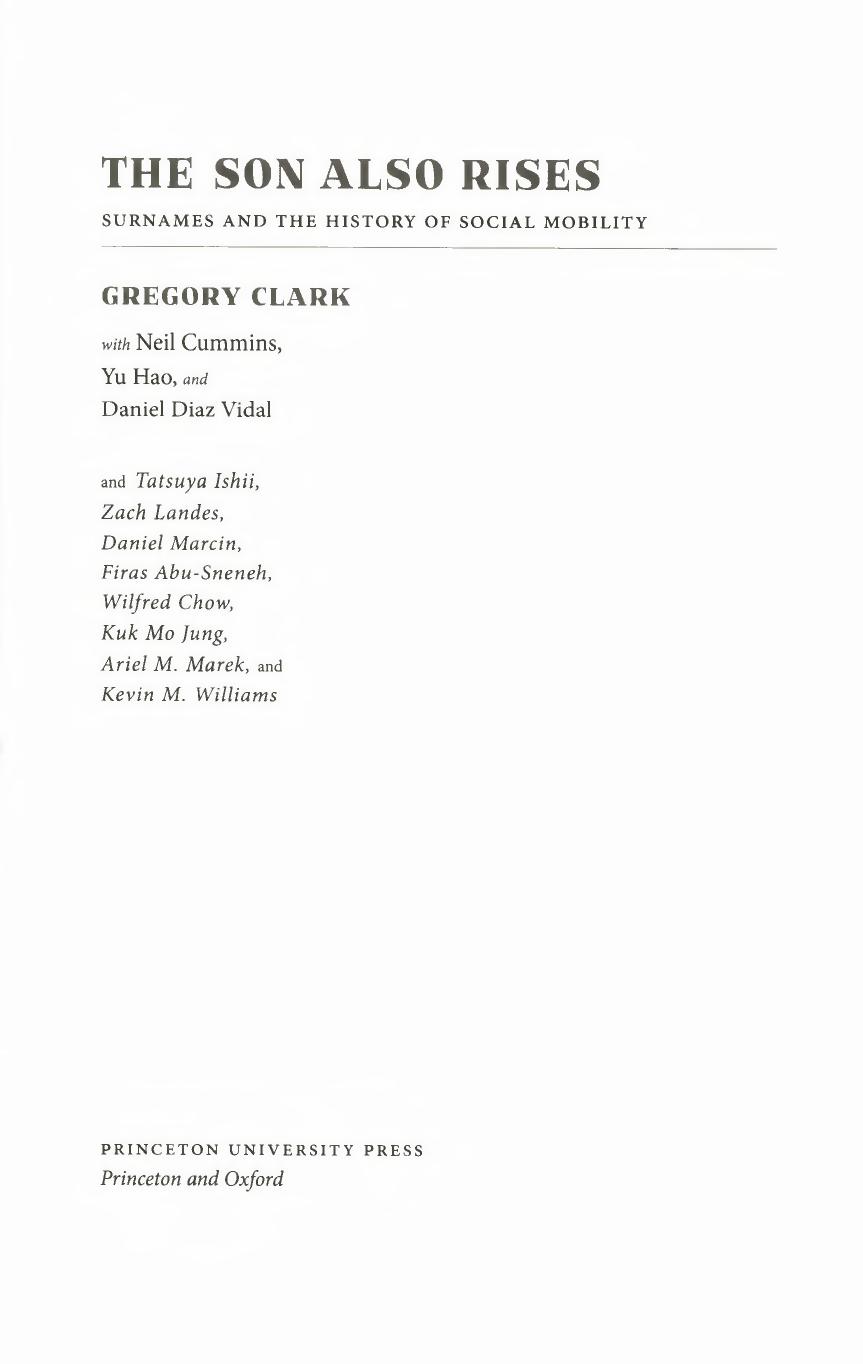The Son Also Rises: Surnames and the History of Social Mobility by Gregory Clark

Author:Gregory Clark [Clark, Gregory]
Language: eng
Format: epub, mobi, pdf
Publisher: Princeton University Press
Published: 0101-01-01T00:00:00+00:00
TABLE 10.6. Relative representation of samurai and kazoku among medical researchers, 1965–89
Year
Samurai
Kazoku
Observed 1965–66
30
13
Observed 1989–90
70
23
1965–66
5.99
4.95
1989–90
4.69
2.94
Implied persistence rate
0.84
0.64
SAMURAI VERSUS KAZOKU MOBILITY RATES
The persistence rates estimated for the kazoku for 1900 and later are in the range 0.64–0.71, and for common surnames the rate is 0.65. This is similar to but perhaps a bit lower than in other countries. However, the persistence rates for the surnames associated with the samurai are 0.84–0.88, higher than elsewhere. There is also evidence that the samurai surnames are now more elite than the kazoku surnames, even though circa 1900 the kazoku were the most elite group in Japanese society. Why has regression to the mean across all these measures been faster for the kazoku than for the samurai descendants?
One interesting difference between the two groups is that all the samurai surnames were identified as belonging to at least one samurai family in 1812, whereas the kazoku surnames were identified as belonging to families added to the kazoku between 1869 and 1946. Only 42 percent of the kazoku derived from the hereditary nobility; the other 58 percent were people awarded titles in recognition of distinction in the military, administration, commerce, and other professions between 1869 and 1946.
According to the theory posited in chapter 6, observed status on any dimension is related only with some degree of error to an underlying social status, which regresses slowly to the mean. When we observe samurai publication rates for 1900 onward, using Google Scholar, to get a measure of observed status, the selection of surnames is based on samurai names from 1812. Thus the expected value of the underlying status equals that of observed status for 1900 and later. Publication rates are an accurate indicator of samurai status overall. We thus observe in the publication rates the rate of regression of underlying status, even though publications are just a partial indicator.
However, in the case of the kazoku, many of whom achieved prominence only after 1880 and constituted the initial cohort of this elite, those showing up as authors between 1900 and 1949, and even in the 1950s and 1960s, include many individuals newly appointed to the kazoku because of their distinction in scholarly or technical fields. Thus for this group, the expected error relating observed status (measured by number of publications) to underlying status is positive on average. The observed regression to the mean for observed status is thus greater than that for underlying status, because in the succeeding generations the average error linking publication rates to underlying status is once again zero.
Despite this observed faster regression to the mean of the kazoku, then, there may well be no inherent difference in the social mobility rates of the kazoku and the samurai descendants after 1947. If that is the case, however, we would expect that by the 1970s, when most of the first-generation kazoku were dead, then the rate of regression to the mean of both groups should be the same. The expected error term relating their observed status on any measure to underlying status is now zero for both groups.
Download
The Son Also Rises: Surnames and the History of Social Mobility by Gregory Clark.mobi
The Son Also Rises: Surnames and the History of Social Mobility by Gregory Clark.pdf
This site does not store any files on its server. We only index and link to content provided by other sites. Please contact the content providers to delete copyright contents if any and email us, we'll remove relevant links or contents immediately.
International Integration of the Brazilian Economy by Elias C. Grivoyannis(90733)
The Radium Girls by Kate Moore(11921)
Turbulence by E. J. Noyes(7935)
Nudge - Improving Decisions about Health, Wealth, and Happiness by Thaler Sunstein(7615)
The Black Swan by Nassim Nicholas Taleb(7010)
Rich Dad Poor Dad by Robert T. Kiyosaki(6399)
Pioneering Portfolio Management by David F. Swensen(6226)
Man-made Catastrophes and Risk Information Concealment by Dmitry Chernov & Didier Sornette(5921)
Zero to One by Peter Thiel(5684)
Secrecy World by Jake Bernstein(4643)
Millionaire: The Philanderer, Gambler, and Duelist Who Invented Modern Finance by Janet Gleeson(4374)
The Age of Surveillance Capitalism by Shoshana Zuboff(4209)
Skin in the Game by Nassim Nicholas Taleb(4161)
Bullshit Jobs by David Graeber(4094)
The Money Culture by Michael Lewis(4074)
Skin in the Game: Hidden Asymmetries in Daily Life by Nassim Nicholas Taleb(3929)
The Dhandho Investor by Mohnish Pabrai(3698)
The Wisdom of Finance by Mihir Desai(3650)
Blockchain Basics by Daniel Drescher(3496)
